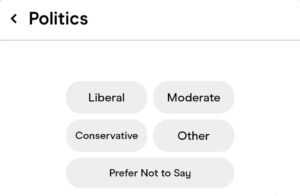The needle scratching on an album, freshly plucked from its sleeve used to be something

only the older set enjoyed. But not anymore.
Vinyl record sales are on the rise, and Val Camilletti, owner of Val’s Halla Records, located in Oak Park, has an explanation as to why vinyl is suddenly all the rage again.
“The major media just caught up,” she said. “This has been happening now for over the last two or three years.”
Fellow record store owner Morry Barak of Favorite Records, in Wicker Park, attributes this spike to the death of digital.
“I think people just are rejecting music in general of today,” said Barak. “There’s not a really good way to sell it, downloads are a weird, intangible thing.”
Vinyl isn’t just limited to your mom and dad’s old Rolling Stones or Al Green LPs—or long-playing microgroove record, another name for vinyl. A wide variety of artists, both young and old, are on album covers. But exactly why would someone want to hear the new Feist album on a turntable when one can easily illegally download the album?
“More people are being accustomed to the analog sound,” said events coordinator Ami Gloria, 38. “It’s richer; got a lot more warmth about it. I think digital is not as good as analog in my personal preference.”
Graphic designer Jeff Potter shared a different view on the sound difference between digital and analog.
“I don’t think it’s better,” he said, of the sound quality. Potter described his music collection as “pretty much all digital.”
The sound debate is one that record store owner Camilletti knows all too well. She feels there is a preconceived notion that vinyl generally sounds better than a compact disc.
“Music recorded in analog between 1955, let’s say, and 1985, the sound on LP is much richer and deeper. But it was not recorded digitally,” she explained. “In reality, music that was just recorded, like the new Black Keys record, there’s going to be little or no difference between the LP and the CD because that record was made digitally.”
The difference in analog and digital, according to Camilletti is simple: the analog sound has an impact on how one feels, relating back to the warmth that Gloria had mentioned. With digital, the sound is cleaner, and the impact is “much more mechanical, much less emotional.”
Camilletti also brought up a good example: if someone were to pick an album that meant a lot to them because it reminded them of a something epochal in their lives—a first date, graduating high school, your teenage years, etc.—and heard it on a CD, it would be drastically different than if one heard it on an album. With an album, one feels the music more, and it generally enhances any previous adoration for the music.
If the driving force behind vinyl’s resurgence isn’t sound, others believe it’s something more obvious.


Visit Urban Outfitters, and one is likely to find various vinyls. The titles range from old to new. There’s your Michael Jackson and Beach Boys LPs. But there’s also artists such as Weezer, heatseeker EMA, Radiohead, and even Nicki Minaj.
Favorite Records owner Barak recalled a story some years ago about a friend of his whose junior high daughter was into vinyl.
“She was saying, oh, all the cool kids have records,” he said. “The cool kids in her junior high, way back, were already buying records. It’s just connecting with the culture.”
Trends in music are usually tracked by Nielsen SoundScan, a tool which measures the sales in music. Nielsen is responsible for letting the general public know how many units a specific artist moved in its debut week.
Nielsen reported that album sales at independent record stores “increased over 39 percent” during the week of Record Store Day, which occurs on the third Saturday every April, in celebration of the independent record store, according to Nielsen Wire.
Camilletti remembered how it was done in 1972, the year in which she first opened Val’s Halla.
“The radio stations would call us once a week and say okay, what’s your top twenty, or what’s your top ten?” said Camilletti. “They would do real, in person, by phone cross checks of stores of different sizes; big department stores, independent stores. . .to see what was selling.”
Trend or not, vinyl continues to prosper. Barak is even selling record players at his store, satisfying the audiophiles and music junkies alike.
Modern bands are also putting out vinyls. In September, post-hardcore band Thrice had an early vinyl release of their seventh studio album, according to The Audio Perv. And according to Noise Creep in October, alternative metal band Deftones announced the release of their six albums on vinyl.
“I think it’s just the reflection of American culture and that people want to hang onto it,” Barak said.

















Be First to Comment